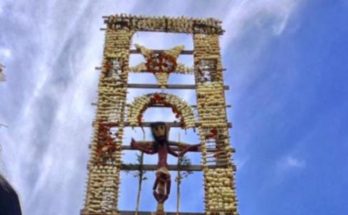By Arturo Morales
In a New Spain classist society, at the beginning of the Spanish domination in these lands of the Tierra Adentro Frontier, where the ambition to obtain fortune and fame through the enormous rapid riches through the discovery of gold and silver veins, in these lands where the metamorphic rocks between volcanic Mesoamerica and the sedimentary rocks of the semi-desert of Aridoamerica were visualized with the naked eye, the foundation of the Villa Protectora de San Miguel occurred in 1555, when the discoveries of the main vein were consolidated of silver and gold in the sinkhole of San Bernabé (1548), the Realejo, later called mineral of La Luz, and the mineral of Rayas, these, in the current city of Guanajuato.
Faced with the incursion of the Spanish and their indigenous allies to this geological, geographical and cultural border, as the main road to the real mines of Zacatecas (1546) and Guanajuato (1555), they decided to found a town for Spaniards (excuse the redundancy, since villa was synonymous with the human settlement of peninsulars), right in the altépetl or, for the local Chichimeca indigenous groups, the holly Montequehuma (Smoky mountain), alluding to the steam columns of some of its thermal water springs that extended for more than 5 kilometers from today, archaeological sites of Agua espinosa and the Cerro de las Tres Cruces. In this way, the town, between hills and gentle ravines, would have a privileged position in defensive terms and would have the permanent supply of water springs from the volcanic slope of Palo Huérfano or Los Picachos.
In this way, between the Real de Minas de la Santa Fe de Guanajuato and Santiago de Querétaro, starting in 1573, adopting, as far as possible, the ordinances of Felipe II, the Villa Protectora de San Miguel, better known during the viceroyalty, like San Miguel el Grande, but very significant and important, around this Spanish village, barrios (neighborhoods) or lots were established for the Indians of peace where neither Spaniards, nor mestizos, nor africans, nor mulattoes could live.
In addition to the above, in order to have a separation area between the town and the neighborhoods, to the east were the ravines where the Montequehuma springs were born, to the north the stables for mules, horses and donkeys, around the Camino Real de Tierra Adentro; to the west and south, the Spanish orchards and after two centuries of Spanish domination, the manor houses and country houses.
In this way, the barrios (neighborhoods) around the village (town), due to their geographical proximity, had contact, to a greater extent, with other communities of Indians of peace, which, as in the first ones, had their chapel as a tangible and intangible nucleus, nominally Catholic, but in an almost natural process, they were also transformed into ceremonial centers with a rich European and indigenous syncretism; pointing out that some other barrios were founded closer to haciendas, ventas, or haciendas.
As an example of the above, today we can marvel at colonial constructions that are testimony to this cultural evolution during the three centuries of Spanish domination; for example, to the north of the city of San Miguel de Allende we can find the demarcation of large areas for the stay of equines, such as the stable in the streets of: Ánimas, Homobono, Calzada de la Presa, Calzada de la Luz, around to this, we can appreciate public fountains, cylindrical buttresses, remains of barns and corrals. Adjacent to this block is the Barrio de el Tecolote. Also in this northern area, we can admire part of the grain barns of the corrals of Calle de los Órganos, also, with its barrio chapel.
To the south-west of the old San Miguel el Grande, the Manor House of the De la Canal family, name of the mansion that many of us in San Miguel de Allende knew as the Instituto Allende. Following the tradition of Lebeña, Cantabria, from 1731 he established his manor-house, where he lived to found his lineage in the former San Miguel el Grande. This Novohispanic Creole nobleman, knight of the order of Calatrava (symbolized in his properties with a cross with a double crossbeam), in this entire block (today, streets of: Ancha de San Antonio, Cardo, Aldama, Nemesio Diez), built the house, its horse stable, water box, public and private fountains and in the back of the house a garden, mostly with walnut trees, which we were able to enjoy in the senses and environmental services, until the first decade of this 21st century. In front of this manor house is the neighborhood of the red house or San Antonio. The colonial villas or rest houses will be time for another occasion to continue with the stories of the Wonders of the Inland Frontier.




